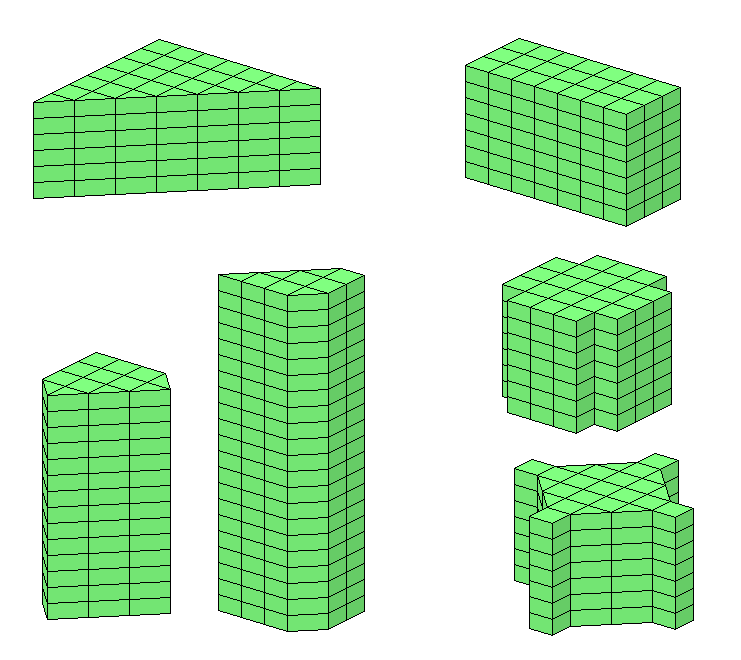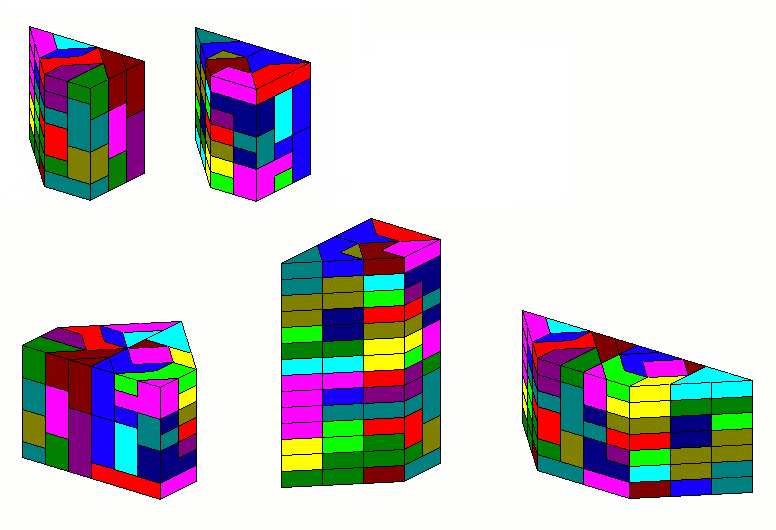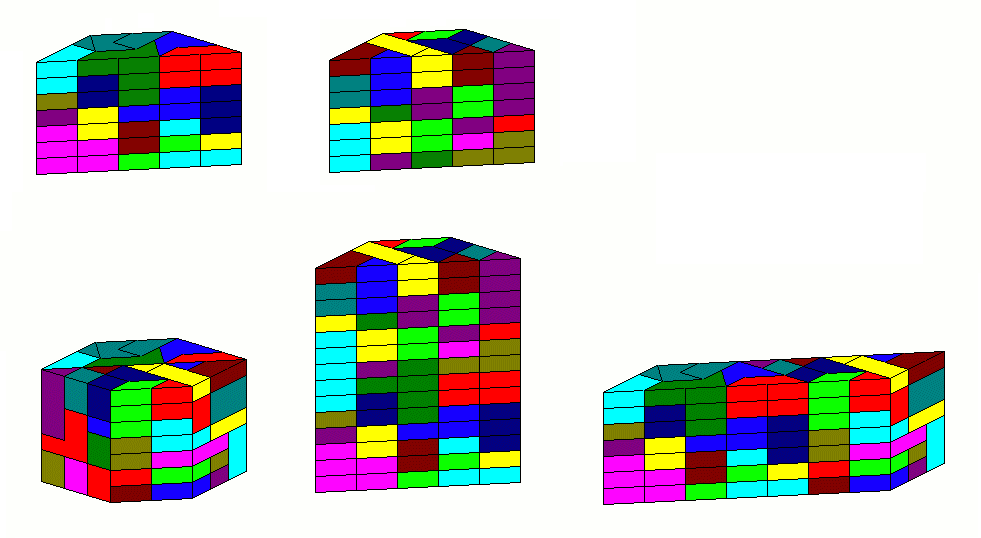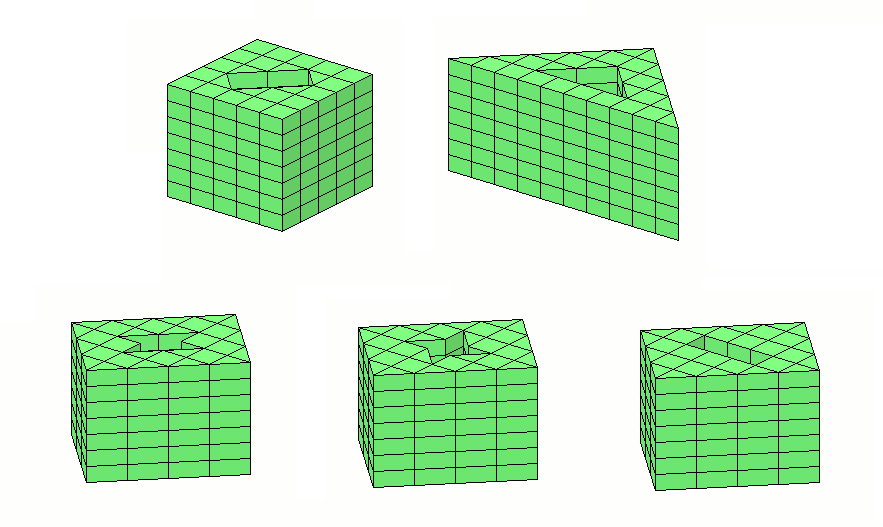Combined Set of Stacked Tritans and Tetratans
There are no constraints for constructions with this set and the total number of triangles
66*4+10*3=264+30=294 can be well factorized, because 294=2*3*7*7.
Therefore posssible heights for prisms are 6, 7, 14 and 21 with cross-sections consisting
of 49, 42, 21 or 14 tans, respectively.
 With height=6 a perfect replica of a tan can be made.
The layers for this prism are here.
With height=6 a perfect replica of a tan can be made.
The layers for this prism are here.
For height=7 on the right side of the picture we can get a 3*7*7 box and prisms with rotational symmetry
like the cross tower or the castle. To get solutions
for these figures I split the whole prism into two parts, because the computer program is more efficient
on small areas.
The prism with height=14 has a symmetric pentagon as cross-section whereas
the cross-section of the prism with height=21 is irregluar.
Two congruent rectangular trapeziums of height=7 can be used to make prisms with a pentagon or trapeziums as
cross-section. The layers for the two prism are here.

Two congruent isosceles trapeziums of height=7 can be used to make prisms with a hexagon, a trapezium
or a parallelogram as
cross-section. The layers for the two prism are here.

If we allow holes in the cross-section, a square with a rectangular hole or a triangle with a triangle hole
are possible symmetric bottom areas.
Starting with a 3h*4h rectangle we can leave out a hexatan hole to get an
area of 42 tans for the cross-section. Some examples are shown.

Here are the layers for the first two figures
and for the prisms with hexatan holes.
Back
Home




